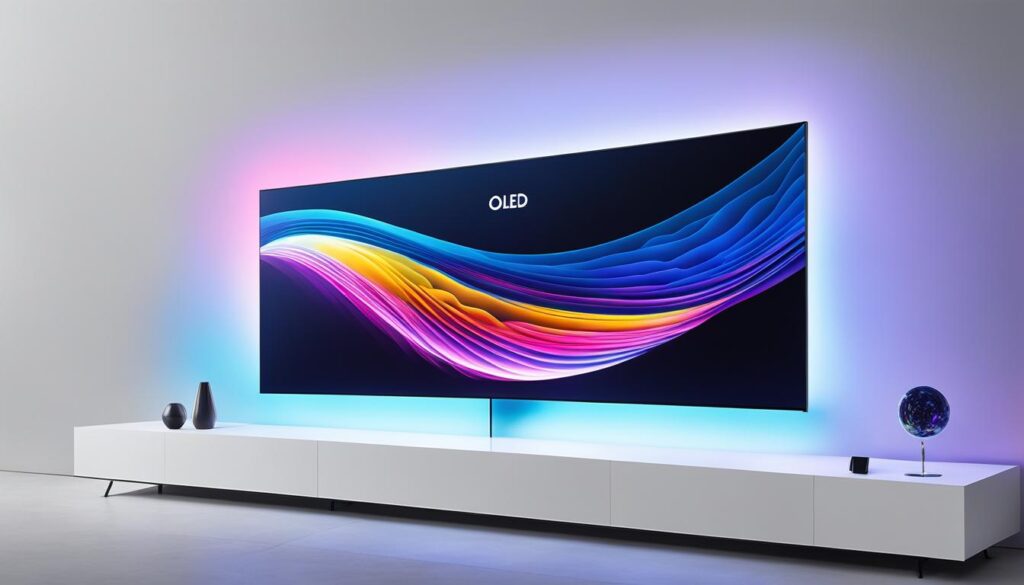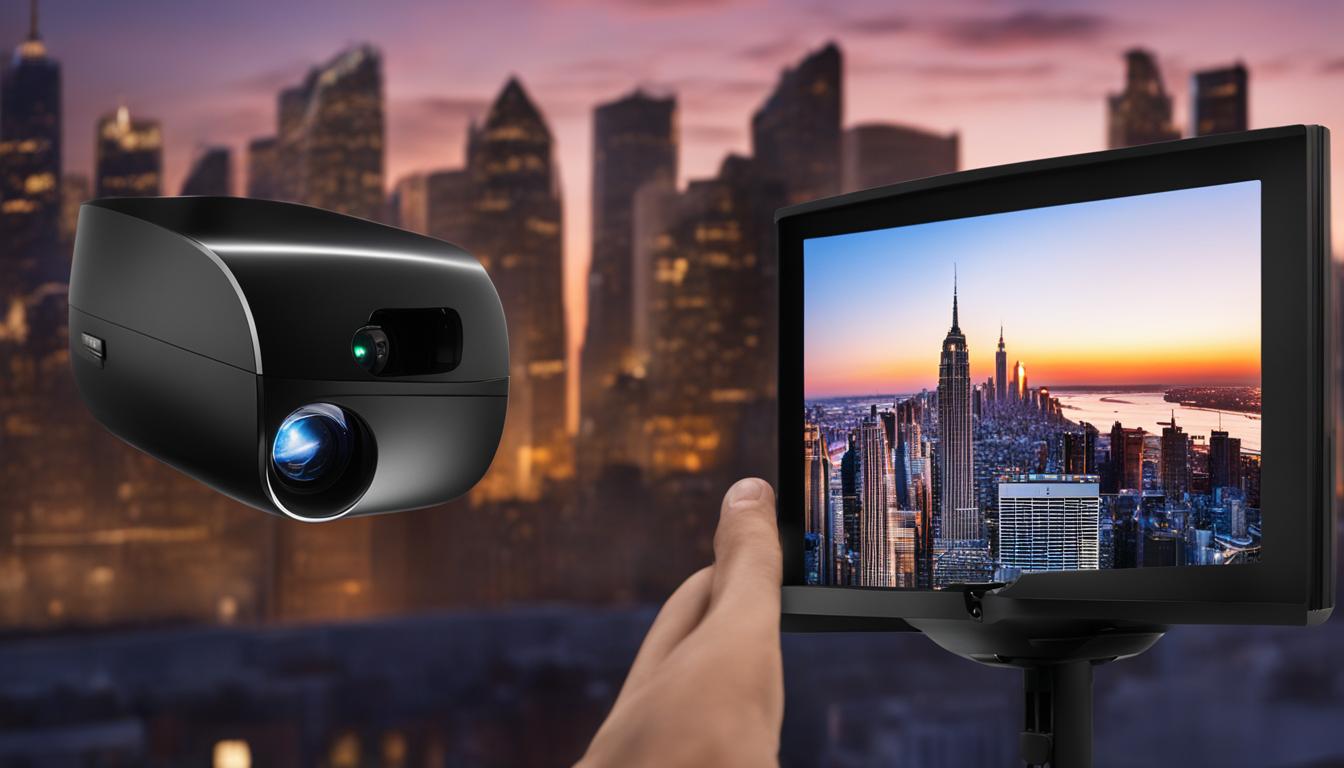Audiovisual (AV) technology is a dynamic and integral part of the information technology (IT) landscape. From multimedia solutions to video conferencing, AV plays a crucial role in how we consume information and communicate. Whether you’re a professional in the industry or simply an enthusiast, understanding AV technology is essential in staying informed and harnessing its full potential.
With the rise of remote work solutions, the importance of AV technology has only grown, supported by advancements in 5G connectivity and IoT integration. The AV industry is constantly evolving, with new trends and innovations reshaping the way we experience audiovisual content.
Contents
- 1 Upcoming Audiovisual Trends in 2023
- 2 Revolutionizing Visual Technology
- 3 Impact of AI on the AV Industry
- 4 Conclusion
- 5 FAQ
- 5.1 What is AV in information technology?
- 5.2 What is AV technology?
- 5.3 How does AV technology impact the IT landscape?
- 5.4 What are some common AV technology terms?
- 5.5 How can AV technology be used in the IT industry?
- 5.6 What are the upcoming trends in audiovisual technology in 2023?
- 5.7 How are OLED and MicroLED displays revolutionizing visual technology?
- 5.8 What is the impact of AI on the AV industry?
- 5.9 How can AV tech be used to create engaging presentations?
- 5.10 How can AV technology enhance audience engagement?
- 6 Source Links
Key Takeaways:
- AV technology plays a crucial role in IT, shaping how we consume information and communicate.
- Remote work solutions and advancements in 5G connectivity and IoT integration are driving the growth of AV technology.
- Staying informed about the latest trends and developments in the AV industry is essential for professionals and enthusiasts.
- Emerging technologies like augmented reality (AR) and virtual reality (VR) are reshaping the AV landscape.
- By harnessing the power of AV technology, we can enhance our experiences and drive innovation in the industry.
Upcoming Audiovisual Trends in 2023
The AV industry is on the brink of a transformational year in 2023, with several exciting trends poised to shape the future of audiovisual technology.
- Immersive media, including augmented reality (AR) and virtual reality (VR), is taking center stage in various sectors, such as healthcare, enhancing precision and reducing risks.
- AI’s impact on the AV industry is becoming evident, with AI-driven solutions improving content analysis, user experience, and content management.
- The introduction of 5G connectivity revolutionizes video conferencing, enabling seamless remote collaboration.
- Sustainability practices, including energy-efficient AV technologies, are gaining momentum, aligning the industry with environmental consciousness.
- Interactive displays, powered by IoT integration, offer engaging and personalized experiences.
- The importance of AV certifications is growing as professionals seek to validate their skills and stay abreast of the latest industry standards.
- The digital transformation continues to impact the AV industry, as businesses leverage multimedia solutions and digital signage to enhance customer experiences.
These trends collectively contribute to the advancement of the AV industry, shaping how we interact with audiovisual technologies and paving the way for innovative applications in various sectors.
Revolutionizing Visual Technology
OLED and MicroLED displays are revolutionizing visual technology with their vibrant colors, infinite contrast ratios, and energy-efficient design. These cutting-edge display technologies are reshaping the AV industry and contributing to sustainability practices.
AR/VR integration is also rapidly gaining ground, opening up new possibilities for immersive user experiences across various sectors. From audiovisual training to multimedia solutions and video conferencing, the integration of AR/VR technologies is transforming the way we learn, engage with content, and connect with others.
One of the key drivers of this transformation is the seamless integration of OLED and MicroLED displays with AR/VR technologies. By combining these display technologies with AR/VR, businesses and educational institutions can enhance the quality of education, promote engagement in their operations, enable AI and IoT integration, and revolutionize video conferencing with the power of 5G connectivity.
The Impact on Education
The integration of OLED and MicroLED displays with AR/VR technologies has the potential to revolutionize education. Students can now immerse themselves in virtual environments that bring complex concepts to life, enhancing their understanding and retention of information. Whether it’s exploring ancient civilizations or diving into the depths of the ocean, AR/VR integration provides interactive and engaging learning experiences that captivate students’ attention.
Enhancing Engagement in Businesses
In the business world, the seamless integration of OLED and MicroLED displays with AR/VR technologies offers exciting opportunities to promote engagement and collaboration. Companies can create virtual meeting spaces, where employees from different locations can come together and interact as if they were in the same room. This fosters teamwork, creativity, and innovation, while also reducing the need for travel expenses.
AI and IoT Integration
The integration of OLED and MicroLED displays with AR/VR technologies also opens up possibilities for AI and IoT integration. By combining these technologies, businesses can create smart environments that respond to user inputs and provide personalized experiences. For example, in retail settings, customers can use AR technology to visualize products in their own space before making a purchase decision. This enhances the overall shopping experience and increases customer satisfaction.
5G connectivity plays a crucial role in enabling seamless and high-quality video conferencing experiences with AR/VR integration. The high-speed and low-latency connection provided by 5G allows for smooth audiovisual communication, reducing delays and enhancing real-time interactions.
To stay ahead in the AV industry and harness the full potential of these revolutionary technologies, professionals should consider pursuing AV certifications that keep them updated with the latest developments and advancements. These certifications validate their expertise and ensure they are equipped with the necessary skills to navigate the dynamic world of AV technology.

Impact of AI on the AV Industry
Artificial Intelligence (AI) is revolutionizing the AV industry, driving advancements in content creation, recommendation systems, audience engagement, and AV technology. AI algorithms analyze vast amounts of data to generate high-quality multimedia content swiftly, saving time and effort for content creators. With AI-powered recommendation systems, users receive personalized recommendations that enhance their AV experience, ensuring they discover relevant and engaging content.
AI also plays a crucial role in audience engagement, offering interactive elements and immersive experiences. Through AI-powered AV tech tools, businesses can create interactive presentations, virtual events, and live streaming experiences that captivate and engage their audience. By leveraging AI, AV equipment can be enhanced with smart features like voice recognition, gesture control, and facial recognition, providing intuitive and seamless user experiences.
Furthermore, AV setup and event planning can benefit from AI integration. AV setup guides and training resources powered by AI offer step-by-step procedures and troubleshooting guidance, ensuring smooth AV setup and event execution. AI’s ability to analyze data and make informed decisions can streamline processes, optimize resource allocation, and enhance the overall efficiency of AV setup and event management.
“AI is driving innovation in the AV industry, transforming how content is created, recommendations are made, and audiences are engaged. The possibilities are endless as AI continues to reshape the future of audiovisual technology.”

Conclusion
AV technology is at the forefront of reshaping how we consume information, communicate, and engage with multimedia content in the IT landscape. To stay ahead in the AV industry, it is crucial for professionals and enthusiasts to stay informed about the latest insights, trends, and advancements.
As we look forward to 2023, there are exciting trends on the horizon that will drive the future of AV technology. From immersive media like augmented reality (AR) and virtual reality (VR) to the integration of AI, 5G connectivity, and sustainability practices, the AV industry is undergoing a transformation.
Furthermore, the revolutionizing of visual technology with OLED and MicroLED displays, along with the integration of AR/VR, is enhancing user experiences in education, businesses, and video conferencing. The impact of AI on the AV industry cannot be underestimated, as AI-powered content creation and recommendation systems drive audience engagement and enhance AV setups and event experiences.
By embracing the power of AV tech, professionals can create engaging presentations that captivate audiences, leveraging audio-visual elements and interactive features to deliver impactful messages. Harnessing the full potential of AV technology allows us to enhance our experiences and drive innovation in the AV industry, opening up new possibilities for the future.
FAQ
What is AV in information technology?
AV stands for audiovisual, which refers to technologies used to capture, store, transmit, and display sound and visual content. In the context of information technology, AV technology pertains to the systems, solutions, and tools used to enhance multimedia experiences, communication, and information consumption.
What is AV technology?
AV technology encompasses a wide range of solutions, including multimedia systems, video conferencing tools, digital signage displays, and AV integration. It plays a crucial role in shaping how we consume information, communicate, and engage with multimedia content.
How does AV technology impact the IT landscape?
AV technology reshapes the IT landscape by enhancing communication, improving multimedia experiences, and enabling innovative solutions. It allows for seamless integration of audio and visual elements in various applications, such as presentations, remote collaboration, and training.
What are some common AV technology terms?
Some common AV technology terms include AV integration, multimedia solutions, video conferencing, digital signage, augmented reality (AR), virtual reality (VR), 5G connectivity, IoT integration, OLED displays, MicroLED displays, AI in AV, and interactive displays.
How can AV technology be used in the IT industry?
AV technology can be used in the IT industry to enhance presentations, facilitate remote collaboration, improve multimedia experiences, and enable immersive training. It offers tools and solutions to optimize communication, engagement, and information consumption.
What are the upcoming trends in audiovisual technology in 2023?
The upcoming trends in audiovisual technology include immersive media, such as augmented reality (AR) and virtual reality (VR), AI-driven solutions, 5G connectivity for seamless video conferencing, sustainability practices, interactive displays, IoT integration, the importance of AV certifications, and the digital transformation of the industry.
How are OLED and MicroLED displays revolutionizing visual technology?
OLED and MicroLED displays revolutionize visual technology by offering vibrant colors, infinite contrast ratios, and energy-efficient designs. These displays contribute to sustainability practices in the AV industry and enhance user experiences in various applications, including education, business engagement, AI and IoT integration, and video conferencing with 5G connectivity.
What is the impact of AI on the AV industry?
AI plays a pivotal role in revolutionizing the AV industry, particularly in content creation and recommendation systems. AI algorithms analyze data to generate high-quality multimedia content swiftly and provide personalized recommendations to enhance user experiences. AI integration also drives audience engagement through interactive elements and enhances the capabilities of AV equipment.
How can AV tech be used to create engaging presentations?
AV tech can be used to create engaging presentations by incorporating visually appealing slides using design principles and optimizing audio quality for clear communication. Interactive elements, such as audience response systems, live polls, and video clips, can also encourage audience engagement. Leveraging advanced features of AV equipment, such as screen recording and picture-in-picture functionality, can further enhance the visual impact of presentations.
How can AV technology enhance audience engagement?
AV technology enhances audience engagement by capturing attention through visually appealing presentations, clear audio quality, and interactive elements. It allows for dynamic and visually engaging content, enabling presenters to connect with their audience on a deeper level.




